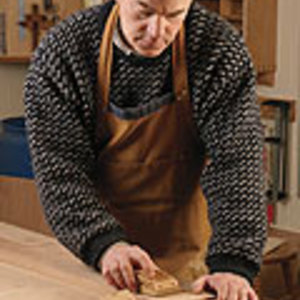All About Chisels and Carving Tools

R.A. Salaman’s Dictionary of Woodworking Tools devotes 17 pages to chisels — many that would be familiar to contemporary woodworkers but many others whose long-lost purposes we can only wonder about. The sheer number of chisel varieties is a reflection of how often this tool is used. But despite all this diversity, a woodworking chisel is a basic handtool that consists of a metal blade sharpened on a bevel at one end and a wood or plastic handle. Standard cabinet blades vary in width from about 1/8 in. to 2 in.
What Counts:
• Quality of steel
• Shape and length of handle and blade
• Lightness and balance of tool
Sorting out Western chisels
Western chisels have flat backs (new ones usually must be polished to remove grinding marks left by the factory) and come in several basic types. Socket chisels end in a conically shaped recess that accepts the end of the handle. The blade of a tang chisel ends in a prong that is set in the end of the handle. Blade edges can be beveled so they fit in the narrow recesses of a dovetail socket, or heavy and square edged, as they would be for a mortising chisel that’s driven with a mallet. Paring chisels have long, thin blades and are used without a mallet. Butt chisels are short, and can withstand a strong blow from a striking tool.
Chisel handles are just as diverse. They can be round, tapered or octagonal in shape. Traditionally made from wood, handles are now frequently made from extremely durable plastics that hold up well to hard use. Some chisels have metal hoops at the end of the handle so they won’t mushroom or split when struck by a mallet.
Japanese chisels sport innovative blades
Japanese chisels have hollowed backs and use a different type of steel for the blades. Unlike Western-style chisels, Japanese makers join a very hard piece of steel at the cutting edge with a softer metal blade body that absorbs shock. Japanese blades are usually sharpened with a flat bevel, while Western chisels can be hollow-ground on a wheel before they are honed.
Steel quality is essential
In addition to length, width, and blade shape, the quality and hardness of steel used for the blades is the most important factor. Blade hardness is measured on the Rockwell-C scale — the higher the number, the harder the steel. Good-quality Western chisels test in the R 58-62 range, but Japanese chisels are harder, in the neighborhood of R 65. Hardness, though, isn’t the only important quality. Tool steel that’s too hard can sometimes be brittle, so manufacturers look for a balance between hardness and toughness. Proper heat treating as well as steel selection make the difference.
Prices vary considerably. You can purchase a set of four moderately priced chisels for less than $50, but handmade or Japanese chisels can cost hundreds of dollars.
Carving tools
A seasoned carver may have scores of sharp carving tools hanging in racks over her bench, and these tools come in a bewildering assortment of shapes, curves and widths. However, experts often recommend starting with a small kit of top-quality tools and adding to it slowly as the need arises.
The most generally useful types are straight gouges, V-parting tools, fishtail, and spoon gouges. All have different shapes, but carving tools use a numerical system to differentiate one from the other. Stamped on the handle is a number that denotes the sweep, or curve, of the blade plus the width of the blade in millimeters. The severity of the sweep runs from No. 1 (flat) all the way up to No. 11, which has a U-shaped cutting edge. So, for example, a 5/20 carving tool is a No. 5 sweep 20mm wide.
A different shape for every cut
Straight gouges are general-purpose carving tools, while V–parting tools can be used to define different areas of carving by sketching on the surface of wood. Spoon gouges are good for removing concave areas and creating deep interior curves. Fishtail chisels and gouges flare at the end and provide good visibility of the cut.
Steel quality and ergonomics matter
As with regular woodworking chisels, the quality of the steel used to make the tool is very important in how keen an edge it can take and how long the edge will last (some carvers advocate looking for well-made second-hand tools rather than buying inexpensive new ones that won’t perform as well). Round-handled tools can roll off a bench while those with octagonal handles stay put. Look for finely ground edges and good overall machining. Carving tools come in many price ranges, but top-quality tools may cost up to $60 each.



















Log in or create an account to post a comment.
Sign up Log in